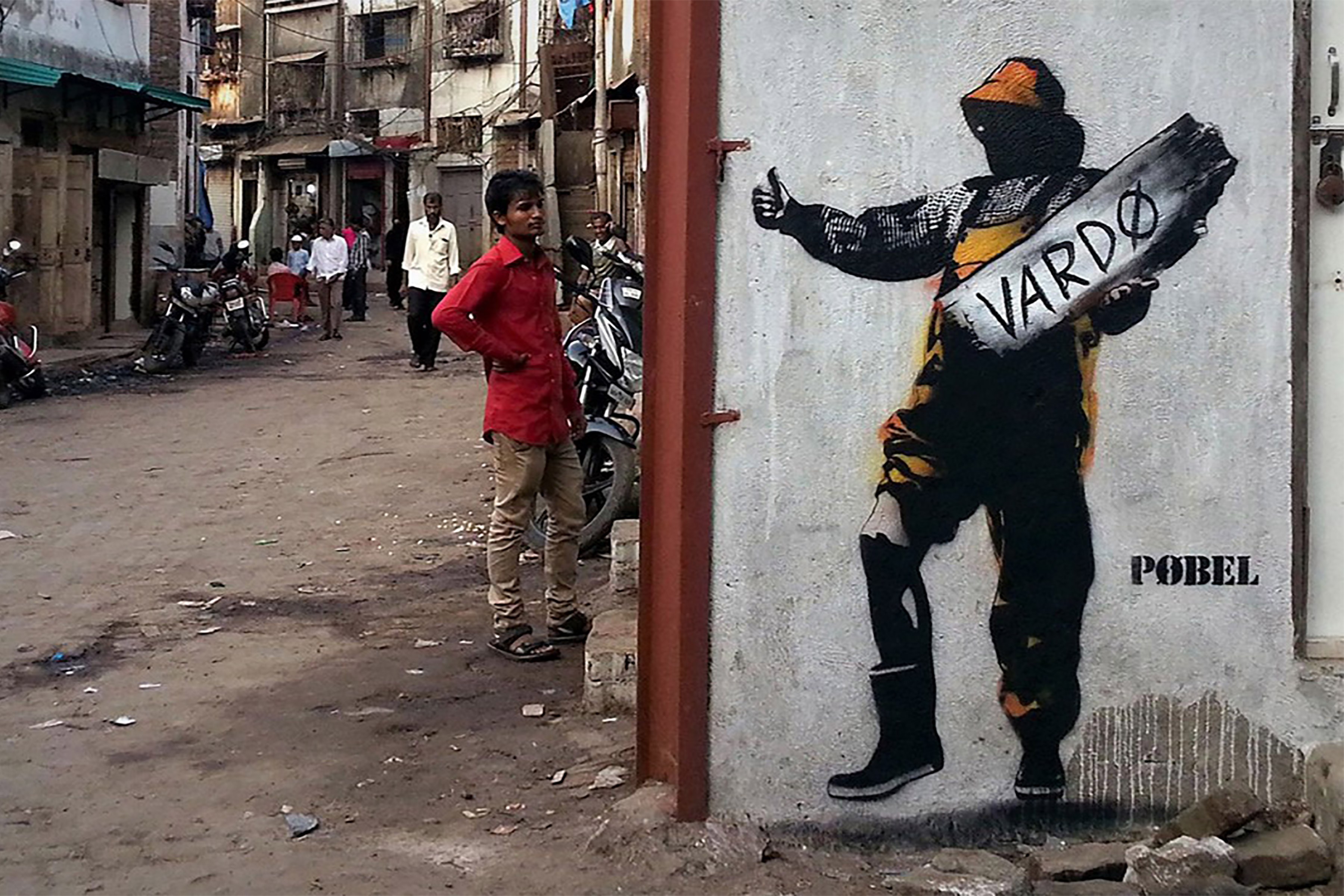To most people, the region of Dharavi in Mumbai is familiar solely as one of the world’s largest slum areas. With a population of around 700,000 in an area of just over 2.1 square kilometres, the region is also one of the most densely populated areas in the world. Amidst the general sense of apprehension that gets invoked whenever the area is mentioned, what doesn’t get mentioned is that it’s also an area bustling with cultural activity and entrepreneurship.
A major chunk of Dharavi’s inhabitants is made up of poor rural migrants who come to urban Mumbai looking for job opportunities. Owing to the fact that migrants from all over India settle down in the region, Dharavi’s settlement is highly multi-ethnic and diverse. Additionally, the region is an active hub of leather, textile and pottery products, which are sold not only in India but exported to regions including the United States, Europe and the Middle East.
During St+art Mumbai 2014 - our first festival in the city of Mumbai, Dharavi provided the perfect setting for a public art project that would engage with the locals and also add a bit of colour to the neighbourhood. During subsequent festivals held in the city, more artworks were added to the locality.
Owing to the low-rise style of buildings in the area, many lineup artists for the festival took to creating pieces on Dharavi’s rooftops.

In a bid to make its public spaces more interactive, artists also painted murals on many of Dharavi’s walls. Gomez’s piece on 60 Feet Road, Labour Camp laid the founding stone for the Mahim (E) Art District in Mumbai.


During the festival, artists Tona and Gomez also held workshops to further engage with the local residents.














